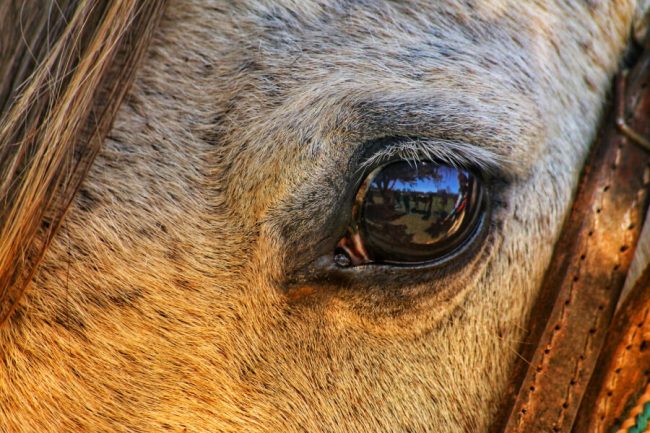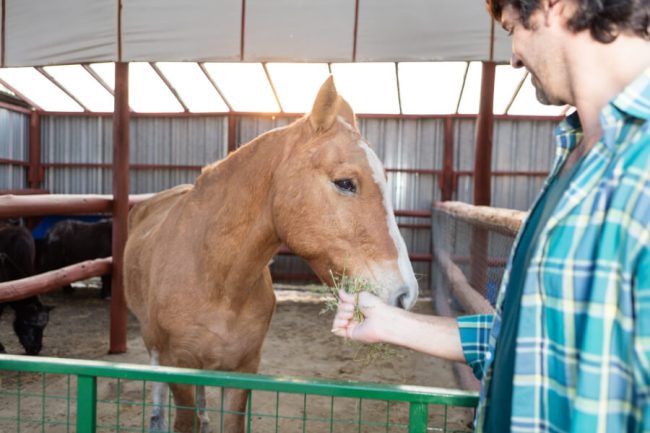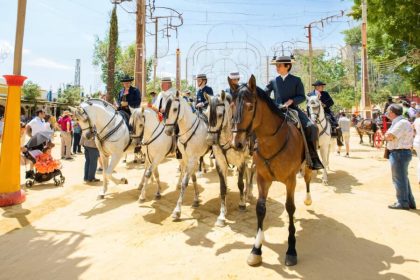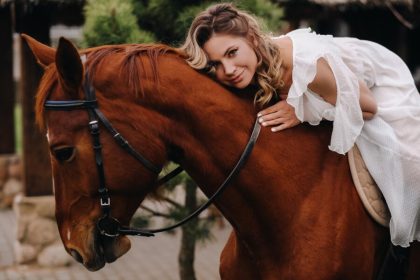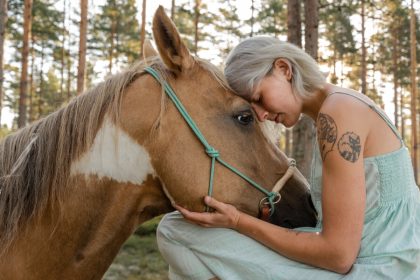Equine Viral Arteritis (EVA) is a highly contagious disease that affects horses worldwide. If you own or care for horses, it’s important to understand how this virus operates, the symptoms it causes, and how it spreads.
This knowledge is vital for protecting your horses and preventing outbreaks, particularly in regions where the virus can lead to severe economic losses and health impacts on the equine population.
We’ll walk you through the key symptoms, causes, and preventive measures of Equine Viral Arteritis, ensuring you’re well-equipped to manage this disease.
What is Equine Viral Arteritis
Equine Viral Arteritis is a contagious viral infection caused by the Equine Arteritis Virus (EAV). It primarily affects horses but can also infect other members of the equid family, including donkeys and zebras.
The virus causes inflammation of the blood vessels (vasculitis) and can lead to respiratory issues, reproductive failure, and in rare cases, death.
While many horses can carry the virus without showing symptoms, Equine Viral Arteritis can have serious consequences, especially for pregnant mares.
Types of Equine Viral Arteritis
There are different strains of the Equine Arteritis Virus, and the severity of the disease can vary depending on the strain involved.
Some strains cause mild symptoms, while others may lead to significant health issues, including abortion in pregnant mares and severe respiratory illness in young foals.
Symptoms of Equine Viral Arteritis
Common Signs
The symptoms of Equine Viral Arteritis can vary widely. Some horses may show no signs of illness, while others develop a range of clinical symptoms. Common symptoms to look out for include:
- Fever: A sudden and high fever is often one of the first signs of infection.
- Nasal Discharge: Clear or yellowish mucus from the nostrils is a typical respiratory symptom.
- Conjunctivitis: Also known as “pink eye,” inflammation of the eyes is a common feature of EVA.
- Swelling: Horses may experience swelling in the limbs, abdomen, and genital area.
- Abortion: In pregnant mares, Equine Viral Arteritis is a leading cause of abortion, typically occurring between 1-3 weeks after infection.
- Respiratory Distress: Coughing and difficulty breathing are also observed in some cases.
How to Identify Symptoms
One of the challenges with Equine Viral Arteritis is that its symptoms can mimic other equine diseases, such as equine influenza or rhinopneumonitis.
To accurately identify EVA, it is essential to observe the combination of symptoms, particularly fever, conjunctivitis, and swelling, and consult a veterinarian for proper diagnostic testing.
Causes and Transmission
How Equine Viral Arteritis is Spread
Equine Viral Arteritis is primarily spread through respiratory droplets, direct contact, and through infected semen.
Stallions that carry the virus can transmit it to mares during breeding, making reproduction a key factor in the virus’s spread.
The virus can also be spread through contact with infected horses, contaminated equipment, or in some cases, from mare to foal in utero.
Main transmission routes include:
- Aerosolized droplets: Horses can inhale the virus from the air, especially in close-contact environments like stables.
- Direct contact: Touching infected horses or their bodily fluids, such as saliva or nasal secretions.
- Semen: Stallions can be long-term carriers of the virus and spread it through natural breeding or artificial fertilization.
Risk Factors for Transmission
Some horses are at higher risk of contracting Equine Viral Arteritis. These include:
- Breeding horses: Stallions and mares are more likely to transmit the virus during mating seasons.
- Horses in dense populations: Stables, racetracks, and large gatherings like horse shows can lead to more rapid transmission of EVA.
- International travel: Horses traveling between countries, especially for breeding, may be exposed to different strains of the virus.
Diagnosis and Treatment
Diagnostic Methods
To diagnose Equine Viral Arteritis, veterinarians typically perform blood tests (serology) to detect antibodies to the virus.
Other diagnostic methods include nasal swabs or semen tests to identify the virus directly. Early detection is important for controlling outbreaks, especially in breeding facilities.
Treatment Options
While there is no specific antiviral treatment for EVA, most horses recover on their own with supportive care, such as rest, fluids, and anti-inflammatory medications to reduce fever and swelling.
For more severe cases, especially those involving respiratory distress or abortion, veterinary intervention is needed.
In breeding stallions, long-term carriers of Equine Viral Arteritis may require isolation and careful management to prevent transmission during mating seasons.
Prevention and Control Methods
Preventing Techniques
Preventing Equine Viral Arteritis largely relies on vaccination and biosecurity measures. The vaccine for EVA is effective but is typically administered to stallions and non-pregnant mares.
Once vaccinated, stallions are less likely to transmit the virus during breeding. However, vaccination alone is not enough to stop EVA’s spread.
Biosecurity Practices
To prevent outbreaks of Equine Viral Arteritis, especially in breeding centers, strict biosecurity measures should be enforced. These include:
- Quarantining new horses before introducing them to the main population.
- Regular health checks and testing for breeding stallions.
- Disinfection of equipment that comes into contact with infected horses.
Management of Infected Animals
If an outbreak of Equine Viral Arteritis occurs, it’s important to isolate infected horses to prevent the spread of the virus.
Infected stallions should be kept away from breeding mares, and veterinarians should monitor the health of all horses exposed to the virus.
Isolation Procedures
Infected horses should be isolated for at least three weeks to minimize the risk of spreading Equine Viral Arteritis.
During this period, their health should be closely monitored, and they should receive appropriate supportive care to aid recovery.
Monitoring and Reporting
Veterinarians and equine professionals are encouraged to report any suspected cases of EVA to regulatory bodies.
Monitoring horses for signs of the disease, especially in breeding programs, helps prevent larger outbreaks and minimizes the economic impact on the equine industry.
Impact on the Equine Industry
Economic Consequences
Equine Viral Arteritis can have significant economic implications, particularly in the breeding industry.
Stallions that carry the virus can face restrictions on breeding, and mares that abort due to EVA can lead to financial losses for breeders. Outbreaks may also disrupt horse shows, racing events, and international equine trade.
Regulatory Measures
Some countries have strict regulations concerning the importation of horses to prevent the spread of Equine Viral Arteritis.
Stallions and mares used for breeding are often subject to testing and quarantine requirements before being allowed to enter new regions.
Conclusion
Equine Viral Arteritis is a serious, contagious disease that can impact horses across the globe.
Understanding the symptoms, transmission routes, and prevention methods is essential for horse owners, breeders, and veterinarians to keep their animals safe.
By staying informed, implementing preventive measures like vaccination and biosecurity, and consulting with veterinarians regularly, you can help prevent EVA from affecting your horses.
FAQs
What causes viral arteritis in horses?
Equine Viral Arteritis is caused by the Equine Arteritis Virus (EAV), which is primarily spread through respiratory droplets, direct contact, and infected semen.
What are the signs of EVA?
Common signs include fever, nasal discharge, conjunctivitis, limb swelling, respiratory distress, and abortion in pregnant mares.
What is the incubation period of the equine arteritis virus?
The incubation period typically ranges from 3 to 14 days, depending on the exposure method.
What is the differential diagnosis of equine arteritis virus?
Diseases with similar symptoms, such as equine influenza or equine rhinopneumonitis, should be considered in differential diagnoses.


